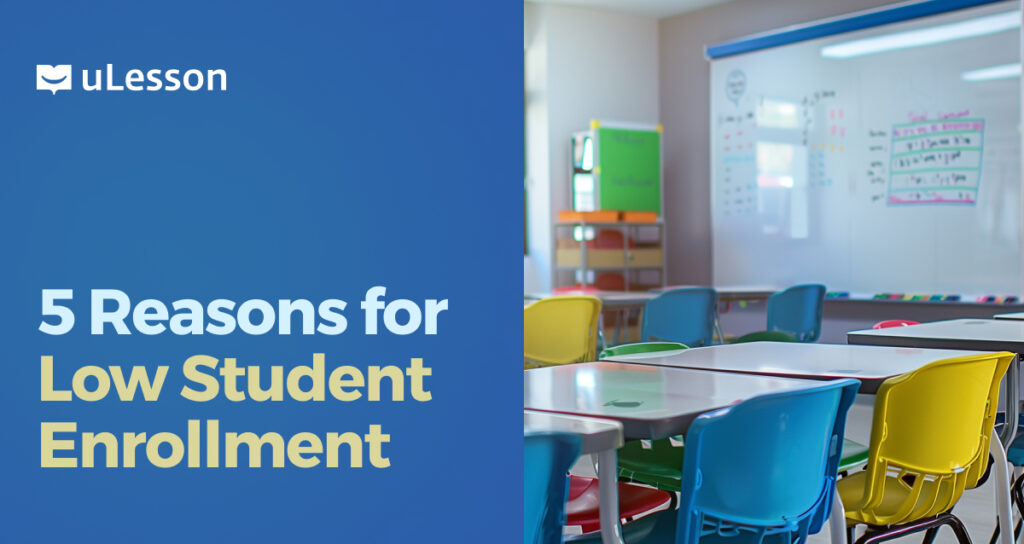In many schools today, there’s an unspoken challenge that often lurks around: low student enrollment. As a school owner, administrator, or teacher, you might have the dream of vibrant classrooms filled with eager learners and supportive parents. Yet, the reality often feels like a never-ending battle.
Fortunately, there’s hope for changing this current reality. But first, it starts with understanding the problem. Let’s delve into the heart of this issue and discover how you can address it.
Reasons for Low Student Enrollment
Perceived Quality of Education
Most parents dream of giving their children the best education possible. So when they perceive a school isn’t delivering top-notch education, their trust wanes, and they start looking elsewhere. It’s disheartening for any educator to see a family leave, feeling their child’s potential could be better nurtured elsewhere.

Limited Resources
Imagine a child with a hunger for knowledge, eager to explore diverse subjects and rich learning experiences, only to find an inadequate bank of resources available. This can be disheartening for both students and parents, who seek comprehensive educational journeys that prepare young minds for a bright future.
Inadequate Support for Students
No doubt, every student has unique needs. Without adequate support, many students struggle silently. When parents see their children overwhelmed without the necessary help from the school, their confidence in the school’s ability to support their child diminishes. This prompts them to seek out better-equipped institutions, resulting in a decline in student enrollment.
Teacher Quality and Turnover
Honestly, a parent would probably get suspicious if there’s a high teacher turnover and a perceived lack of expertise in your school. That can put them off enrolling their children, as that screams instability and a lack of continuity in the learning environment. Parents want consistency and skilled educators for their children, and frequent changes in teaching staff dissolve their confidence in the school’s ability to provide quality education.

School Reputation
In addition, a negative school reputation, stemming from incidents of bullying, poor management, or a lack of discipline, can lead parents to choose other institutions. Additionally, concerns about student safety, such as inadequate security measures or high rates of violence, can drive parents away, further impacting student enrollment.
How to Boost Student Enrollment
Improving student enrollment is possible, but it involves several key strategies. Here are a few of these strategies to note:
- Enhance the perceived quality of education through better teacher training and curriculum development. This increases parents’ satisfaction and student outcomes.
- Invest in modern educational resources and technology to improve student engagement and performance.
- Implement comprehensive support systems, such as after class programmes, guidance and counselling, and mental health services, to address students’ unique needs. This will lead to higher success rates and greater parent satisfaction.
- To reduce high teacher turnover, schools should provide competitive salaries, foster a positive culture, and offer career development opportunities. This will contribute to better student outcomes and higher enrollment rates.
- Enhancing school safety and management practices rebuilds trust and improves reputation, contributing to increased enrollment and community support.

Boosting Student Enrollment Through Edtech Tools
Leveraging edtech tools can help increase student enrollment by improving education quality, offering personalised learning, and enhancing communication between educators, students, and parents.
By embracing these digital solutions, schools can create a more engaging and supportive learning environment, attracting more students and parents and empowering educators. This paves the way for a brighter future in education.
You wouldn’t want to miss uLesson’s upcoming webinar to understand how your school can say bye to low student enrollments and parent engagement. Join us on May 31, 2024, by 2 p.m. (GMT +1) on Google Meet for an insightful discussion. Click here to register.




